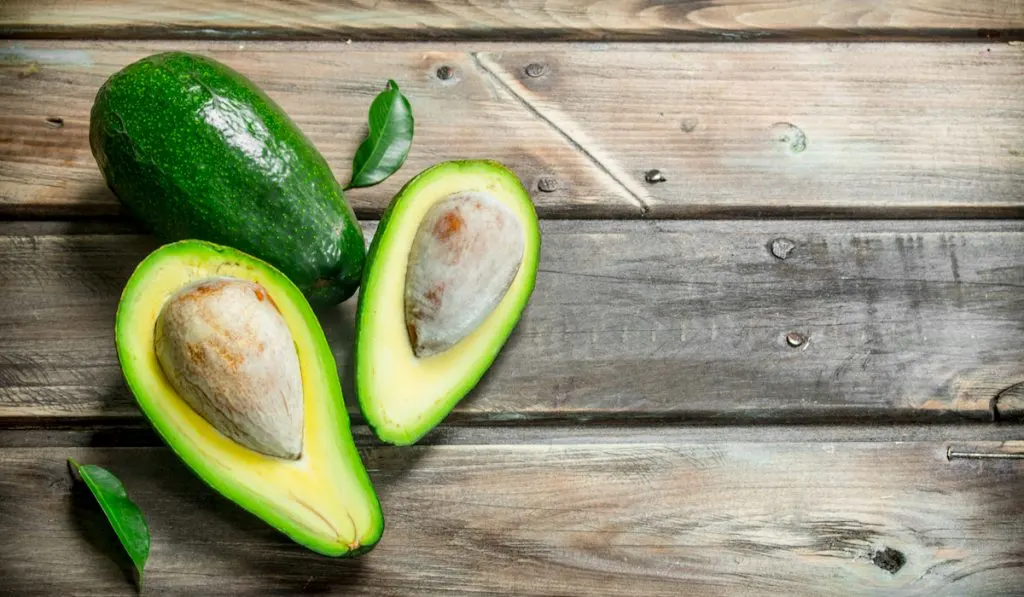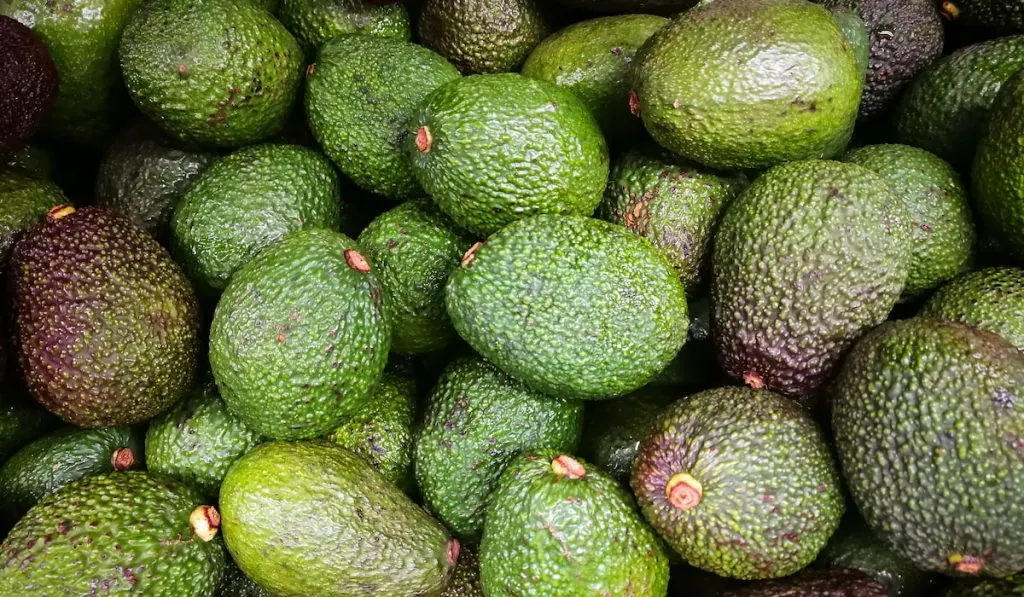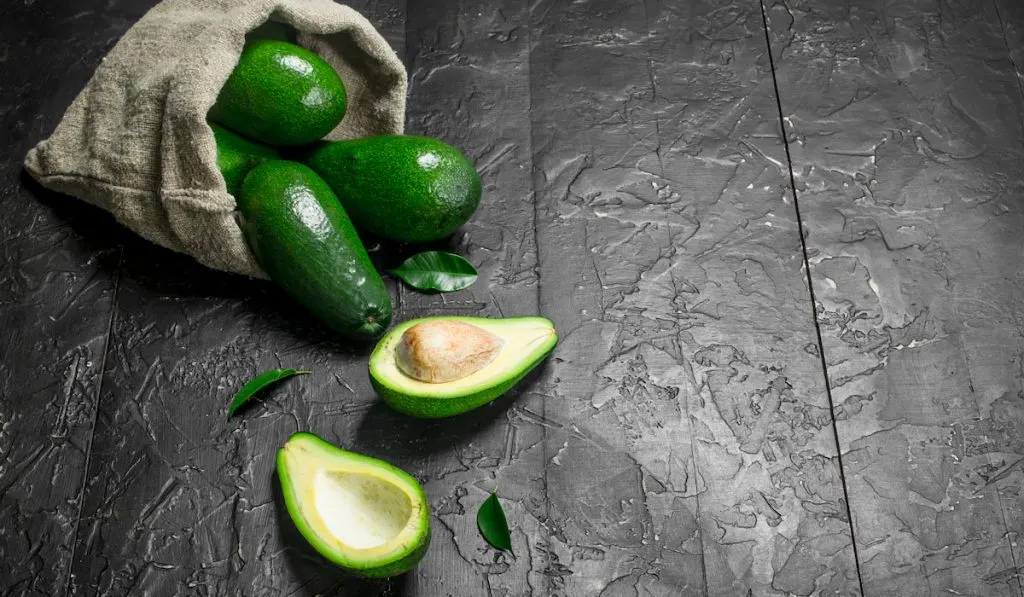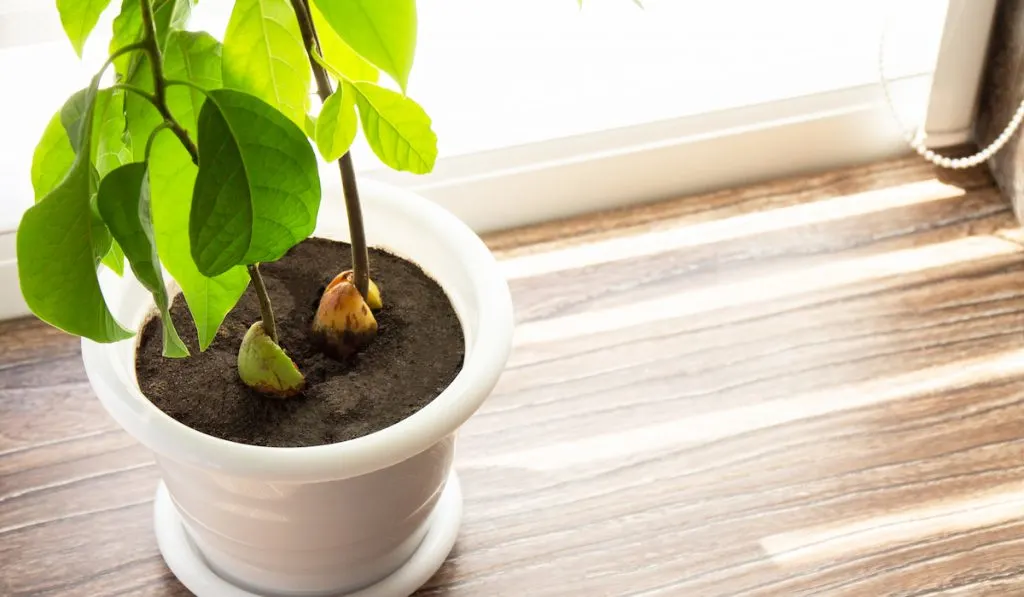What is a Caribbean avocado?
Also known as Tropical Avocados and stated by the name, this is a term used to refer to avocados of Caribbean origin. This green avocado thrives in the warm and humid climate of the Caribbean with the Dominican Republic and sections of Florida producing the majority of the harvest.

They have smooth vivid green skin that keeps shiny and brilliant, even when ripe. You can get them year-round at your local grocery store, but they have the best flavor and quality from mid-October to mid-November.
Because of their thin skin, they are not favorable for long-distance transportation, so end up being consumed mostly locally in their areas of production.
There are many other hybrids of avocado, and some might be available to you, but most might not. They are mainly categorized as A-type or B-type cultivars, with the main difference in the opening times and the pollination differences amongst the avocado tree flowers.
Other differences include size, coloring, shape, flavor, and the peak growing season.
All avocados are partial self-pollinators through a process called dichogamy.
The difference between A-type and B-type breeds is clear because the A-type flowers bloom as females in the morning and later shed pollen in the afternoon, while the B-type flowers shed pollen in the morning and receive them as females in the afternoon. It is therefore advisable to grow two or more breeds together.
Unlike other breeds that may be harvested early from the tree, tropical avocados are supposed to be left till maturity while attached to the tree and only harvested when fully mature. You should then place it in a dry room at room temperature to ripen.
The Dominican breeds and other Tropical avocados are best used alone as a vegetable side dish, as a diced salad garnish, and even as a spread on your toast.

What’s the difference between a Caribbean avocado and a regular avocado?
The main difference between the Caribbean avocados and other avocados mainly comes down to the physical appearance of the avocado, namely the size and color when ripe.
The Caribbean breeds are large and usually maintain their shiny green skin when ripe, while other breeds like Hass change the skin to a darker color, which is an added advantage to them, as you know exactly when the avocado is ripe.
The Caribbean avocados have less fat and oil, making them healthier, more flavorful, and tastier. The more fat in other breeds like Hass avocado is also good.
How do you know when a Caribbean avocado is ripe?
Ripe Caribbean avocados are mostly smooth and free of any major blemishes that could have damaged the flesh. Also, when gently squeezed, they are slightly soft. Those with dark blemishes and too many spots on the skin may not be good. A ripe Caribbean avocado has even skin.
Judging on the sheen of greenness, avocados should be left to mature while attached to the tree, then picked and kept to ripen within an optimal room temperature, and other conditions, which then determine the time the avocado will take to ripen.
At optimal conditions, it will ripen within a short time, no more than a week.

Nutritional value of Caribbean avocados
Besides being tender fleshed, creamy, and tasty, Caribbean avocados are a great source of vitamins and minerals including healthy fats, beta-carotene, folate, potassium, and the essential vitamins B, C, E, and K. Other minerals include copper, phosphorus, iron, manganese, zinc, and magnesium.
Here is a breakdown of the nutrient composition in a 100 grams serving size of a Caribbean avocado.
- Vitamin K: 26% of the daily value (DV)
- Vitamin C: 17% of the DV
- Potassium: 14% of the DV
- Folate: 20% of the DV
- Vitamin B5: 14% of the DV
- Vitamin B6: 13% of the DV
- Vitamin E: 10% of the DV
In every 2-ounces of Caribbean avocado, there are 38 micrograms of beta-carotene. In the body, beta carotene is converted to vitamin A, which is a necessity, essential for skin health, improvement of the immune system, eye health, and good vision.
They also have a large amount of folate, responsible for enhancing cell renewal. This unique factor especially essential since it lowers on a large scale the risk of some types of cancers.
Vitamin C is essential in the body, as it reduces inflammation, boosts immunity, and strengthens circulation. It also maintains and strengthens the collagen and firmness of the skin.
Vitamin E keeps in check and improves the cardiovascular system through the reduction of cholesterol oxidization responsible for strokes and heart attacks. Additionally, it is an antioxidant that protects the body cells from the effects of free radicals.
The Caribbean avocados are rich in vitamin K, which is essential for calcium metabolism, the growth of healthy bones, and for healthy platelet functioning.
These avocados are rich in healthy fats, mono-unsaturated, most of which is oleic acid. These fats are good and healthy for the body, as they enhance better absorption of fat-soluble nutrients, fight inflammation, and are also good for your heart.
They also have antioxidants like zeaxanthin and lutein which are good for your eyes and brain. Amongst others, these anti-oxidants lower the risks of neurodegenerative diseases like Alzheimer’s, age-related macular degeneration, and other conditions like cataracts.
How big do they get?
The fruit usually grows large enough and gets ‘family-sized’. This implies that on average, a normal Caribbean avocado weighs around 500 grams.
The Caribbean avocado trees, on the other hand, have less of a footprint than Hass avocado trees. They do not grow too big and are usually used as shade trees in cocoa and coffee plantations.

Varieties of Caribbean avocados
Caribbean avocados are not a specific breed, but rather a term used to generally refer to a group of avocado breeds that have a Caribbean origin.
Let’s have a look at a few breeds
- Guatemalteca – meaning ‘of Guatemalan origin’, this breed is of the P. americana sub-species. Their skins can be thin, thick, pebbly, shiny, and green, but always have fatty, delicious, and creamy flesh.
- Costeno – the Costeno is an elongated, smooth, and light green-skinned avocado, with a light, low-fat flesh, that is remarkably fruity and delicious. In their indigenous homes like in Ecuador, they are majorly preserved for celebrations and festivities and mainly blended with sugar and milk for a tastier mix.
- Lojano – this breed’s fruit is very large and elongated. It has smooth and shiny green skin. On the inside, its flesh is yellowish-orange and maintains consistency being fatty and buttery around the ripe fruit.
- Criollo – also, natively from Ecuador, the Criollo is a lime-green colored avocado with remarkably smooth skin and is usually huge upon maturity.
The above are just a few of the varieties of avocados that can be considered “Caribbean avocados.” There are many more breeds including Mantequillo, Nacional, Paisano, and Pautena.

Conclusion
Also referred to as the ‘butter pears’, Caribbean avocado fruits are excellent food, loaded with lots of nutrients, vitamins, minerals, and healthy fats.
They often grow big and one is sometimes even enough to feed a whole family. In most cases, an avocado is all you need for your daily dietary supplements because it contains the essential nutrients needed in the body.
Furthermore, they are heart-friendly, weight loss friendly, and have an incredible test.
Caribbean avocado trees, can successfully be planted any season of the year, provided they get enough water and minerals until their roots take hold. A rich and well-drained soil provides the optimal growth conditions for a Caribbean avocado seedling since it cannot tolerate stagnant water on the feet.
You should consider using organic manure such as compost and animal manure to add nutrients around the root area of the avocado.
Additionally, avocados do not tolerate salty water, and so planting a seedling close to a salty water body guarantees the death of the seedling.
Resources
- https://www.theproducemoms.com/2020/04/07/tropical-avocados-101/
- https://www.melissas.com/products/tropical-avocado
- https://www.wlrn.org/culture/2015-08-18/the-struggle-is-real-for-florida-avocados
- http://www.caribbeanfood.com/blog/health-benefits-of-avocado-a-nutritious-fruit
- https://www.healthline.com/nutrition/12-proven-benefits-of-avocado#TOC_TITLE_HDR_14
- https://www.fitday.com/fitness-articles/nutrition/healthy-eating/green-avocado-vs-black-avocado.html
- https://www.smithsonianmag.com/travel/what-makes-these-avocados-different-from-all-others-27947578/
- https://www.wikihow.com/Tell-if-an-Avocado-Is-Ripe
- https://www.freshplaza.com/article/9040129/the-green-dream-from-the-caribbean/
- https://www.westhawaiitoday.com/2012/01/09/features/avocado-production-and-the-caribbean/
- https://www.avoseedo.com/the-real-difference-between-florida-and-hass-avocados/
